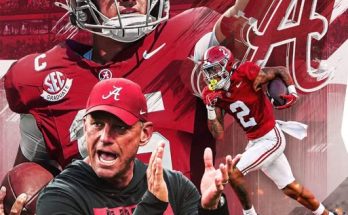REVEALED: Here’s How Much the Dallas Cowboys Cheerleaders Now Earn After Shocking 400% Raise in 2025
The Dallas Cowboys Cheerleaders, often dubbed “America’s Sweethearts,” have long been a symbol of glamour, athleticism, and prestige. But for decades, the reality behind the pom-poms and bright smiles was a stark contrast to the public image—a demanding job with surprisingly low pay. That narrative, however, has taken a seismic shift in 2025. After years of mounting public pressure, legal battles, and changing attitudes toward fair compensation in professional sports entertainment, the Dallas Cowboys organization stunned fans and critics alike by approving an unprecedented 400% raise for their cheerleading squad. For the first time in history, these world-renowned performers are earning what many argue is a wage more befitting their influence and workload.
The cheerleaders’ new compensation package—which insiders confirm pushes their annual earnings from approximately $15,000 to around $70,000—marks a watershed moment in the fight for equal pay within the realm of professional sports entertainment. The announcement comes after months of closed-door negotiations between representatives for the cheerleaders, attorneys specializing in labor law, and Cowboys executives led by team owner Jerry Jones. Sources close to the matter say the deal was finalized just days before the cheerleaders began preparations for the 2025 NFL season.
The pay increase wasn’t just about numbers—it was about recognition. For decades, the Dallas Cowboys Cheerleaders were the gold standard for NFL cheer squads. Their televised tryouts, grueling training camps, international tours, and brand appearances turned them into household names. And yet, despite their high-profile status and their role in helping the Cowboys generate millions in marketing and brand visibility, their compensation remained disproportionately low. Most of the cheerleaders were earning around $150 per game, with additional pay for promotional appearances, some of which were unpaid. Many cheerleaders worked multiple jobs, trained year-round, and invested heavily in personal expenses like uniforms, hair, and makeup—just to keep up with the demands of being a Dallas Cowboys Cheerleader.
The turning point came in late 2024 when a former cheerleader publicly revealed the financial and emotional toll the job had taken on her. Her story went viral, reigniting debates about labor conditions and exploitation within the cheerleading industry. It wasn’t long before current and former cheerleaders began speaking out—some anonymously, others boldly—sharing stories of burnout, unpaid labor, and emotional fatigue. Public outcry followed, bolstered by celebrities, athletes, and even members of Congress who questioned how one of the most valuable sports franchises in the world could afford to pay its quarterbacks millions while its cheerleaders earned less than minimum wage.
Netflix and ESPN capitalized on the moment with a joint documentary, Behind the Smile, which followed several cheerleaders through auditions, rehearsals, and the emotional toll of chasing perfection in a system that failed to reward their contributions adequately. The documentary became a cultural flashpoint, trending for weeks and sparking petitions that garnered over 500,000 signatures calling for immediate change. Even the NFL, long silent on the issue, issued a statement acknowledging that the league would “support efforts to ensure fair and equitable treatment” of cheerleaders across teams.
Behind closed doors, pressure was mounting for the Cowboys to act. Legal experts warned that continued inaction could open the team to lawsuits under wage and labor laws. More than that, the franchise risked irreparable damage to its brand. The Cowboys, known for their business acumen and marketing savvy, couldn’t afford to be seen as outdated or exploitative. Jerry Jones, never one to shy away from a headline, is said to have taken personal interest in resolving the issue. His motivation, insiders claim, was a mix of legal caution and legacy preservation. He wanted to be remembered as the owner who modernized the Cowboys on every front, not the one who let “America’s Sweethearts” be left behind.
The new compensation package not only increases base pay but includes benefits long denied to cheerleaders: healthcare, travel stipends, performance bonuses, and paid vacation time. According to an internal memo reviewed by reporters, returning cheerleaders with more than two years of experience will also receive loyalty bonuses and opportunities to take on mentorship roles for rookies, which come with additional pay.
Reactions to the raise have been overwhelmingly positive. Former cheerleaders have taken to social media to celebrate the milestone, many noting that while the raise comes too late for them, it validates the decades they spent advocating for change. Fans, too, have rallied in support, praising the Cowboys for leading the charge and calling on other teams to follow suit. “This is bigger than football,” one fan wrote on X (formerly Twitter). “This is about dignity. About people finally being paid what they’re worth.”
There are, of course, skeptics. Some critics argue that the raise, while long overdue, was a strategic PR move meant to deflect from the Cowboys’ playoff struggles and declining public trust in the front office. Others question whether the financial model is sustainable, pointing out that not all NFL teams have the revenue streams of the Cowboys. But for the cheerleaders themselves, those debates are secondary to the larger victory: they have finally been seen, heard, and valued.
Several current cheerleaders spoke anonymously to media outlets following the announcement, citing contract restrictions. One described the moment she learned about the raise as “unreal.” “I just started crying,” she said. “For years we’ve been told to be grateful just to wear the uniform. Now it feels like we’re being told, ‘You matter. Your work matters.’”
Another cheerleader shared how the raise would change her life. “I won’t have to work a second job anymore. I can finally focus on training, on being the best performer I can be. I can even start saving for grad school. That wasn’t possible before.”
It’s not just about money. It’s about finally being taken seriously as professionals. Cheerleaders train like athletes, perform under immense pressure, and contribute meaningfully to the NFL’s image. They are brand ambassadors, performers, mentors, and cultural icons. And now, at long last, they are being compensated as such.
The Cowboys’ decision could have ripple effects across the NFL. Several teams are rumored to be reassessing their own cheerleader compensation models in light of the Cowboys’ move. The NFL Players Association has remained publicly neutral on the matter, but privately, sources say, there is quiet support among many players who have seen firsthand the hard work and dedication cheerleaders bring to the field. “They’re part of the team, whether people like to admit it or not,” one player said. “And it’s about time they got treated that way.”
As the 2025 NFL season approaches, all eyes will be on the sidelines. Not just to admire the perfectly synchronized routines or the dazzling smiles—but to recognize that the women performing them are no longer being shortchanged for their talent. For the Dallas Cowboys Cheerleaders, 2025 isn’t just another season. It’s the dawn of a new era—one built on respect, recognition, and finally, fair pay.



